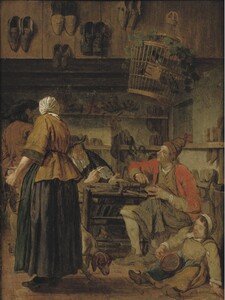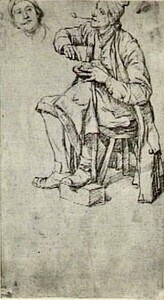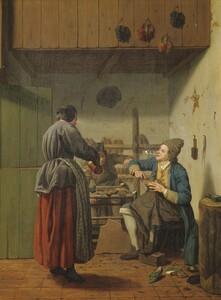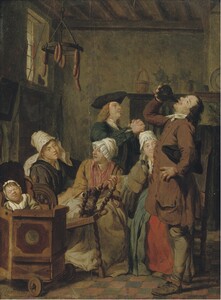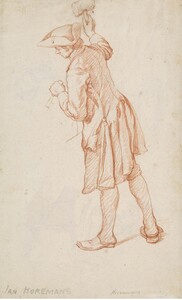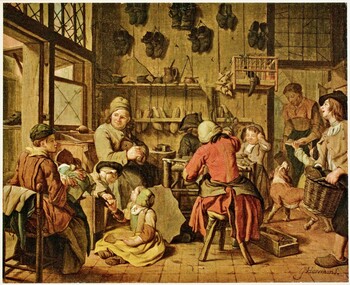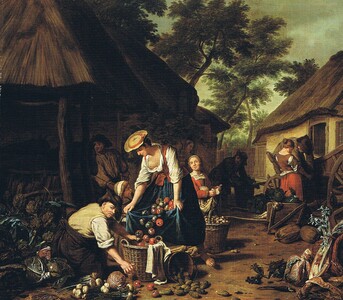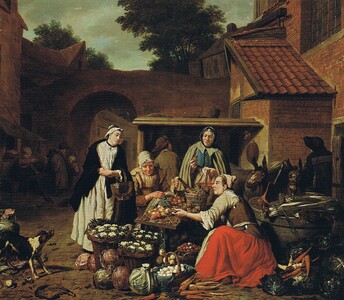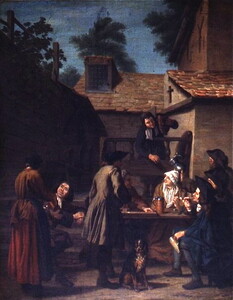3.000 €
A cobbler working in front of his home
Oil on canvas : 38,1 X 30,0 cm
Unsigned
Frame : 558,1 X 50,0 cm
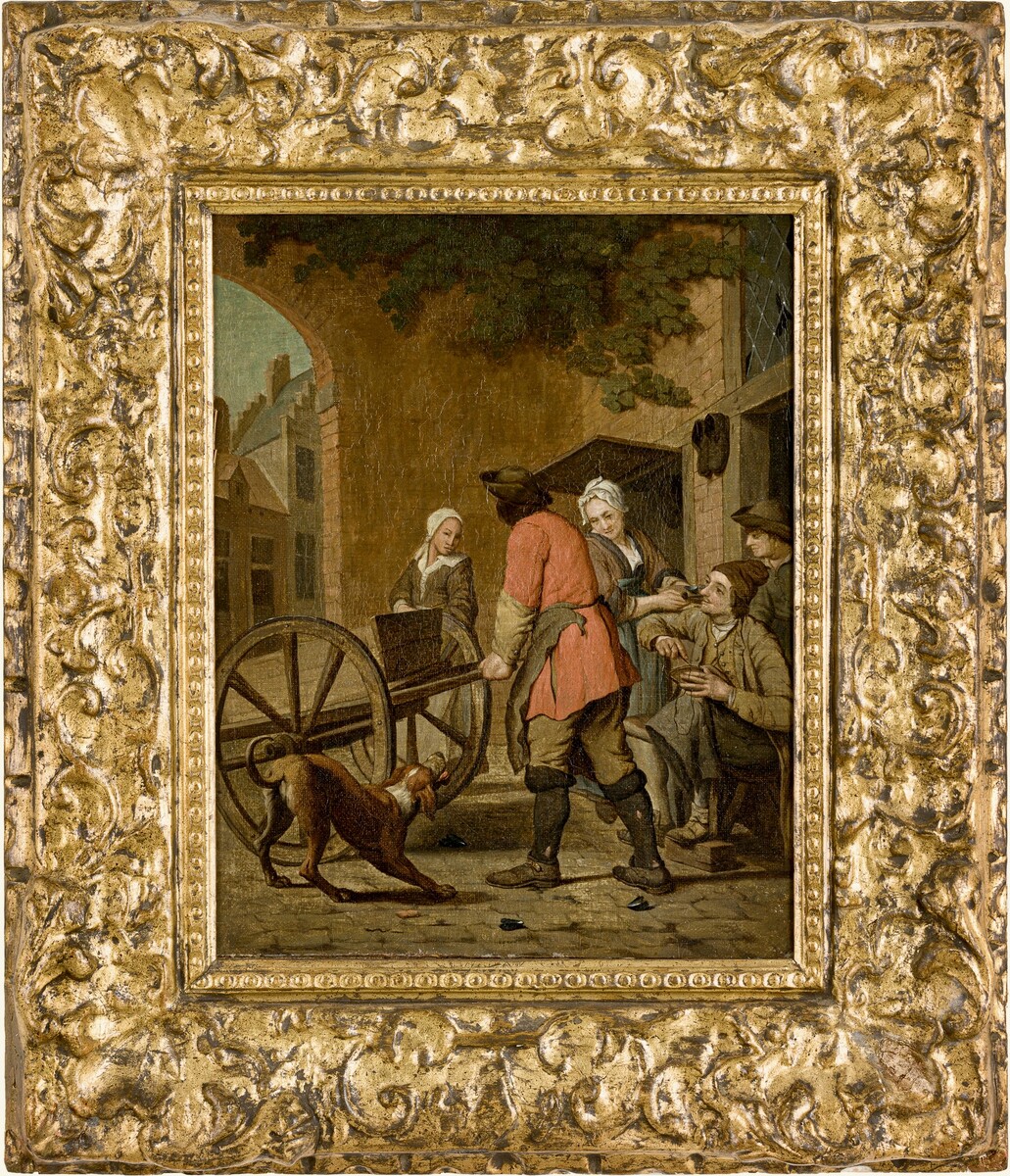
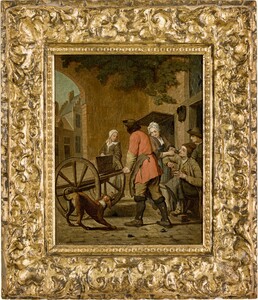
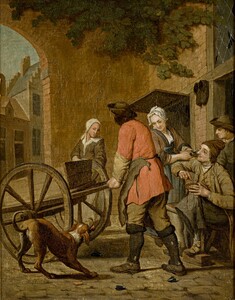
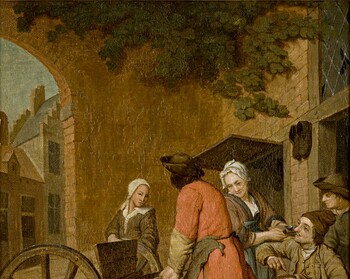
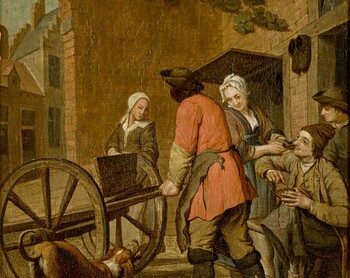
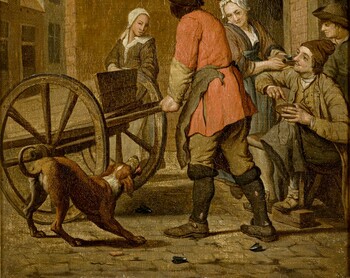
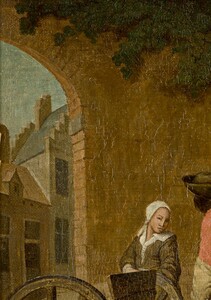
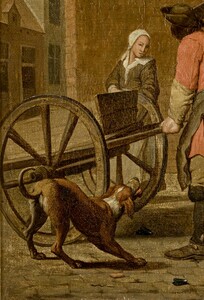
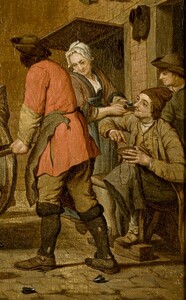
In short
There exist two signed compositions of a cobbler’s interior by the father and the son Horemans, who both carried the same first name, Jan Jozef.
Our cobbler, who is represented outside of his workroom, is painted in exactly the same pose as those two figures.
The typical Roccoco playfulness and light tonalities of one of these paintings, which clearly must be given to Jan Jozef the Younger, stands in stark contrast to the other cobbler’s interior scene and to our exterior scene, that both must have been painted by his father, Jan Jozef the Elder.
About Jan Jozef Horemans I
Flemish painter
Antwerp 1682 – 1759 Antwerp
Antwerp 1682 – 1759 Antwerp
Son of a notary, called Jan-Joseph Horemans.
Pupil and son-in-law of the sculptor Michiel van der Voort I (1667-1737) in 1694-95 and later of the Dutch genre painter Jan van Pee (before 1640-1710), who was active in Antwerp.
Horemans joined the Guild of St Luke in Antwerp in 1706-07. In 1707 he married the daughter of his first teacher, van der Voort.
Horemans joined the Guild of St Luke in Antwerp in 1706-07. In 1707 he married the daughter of his first teacher, van der Voort.
He appears to have followed in the footsteps of the 17th century genre painters, especially the Dutch ones such as Gabriel Metsu and Pieter de Hooch, executing a large number of small, sharply observed anecdotal pictures of contemporary everyday life that were highly prized on the market.
His younger brother, Peter Jacob Horemans (1700 – 1776), was one of his pupils. Peter Jacob settled in Munich in 1725 and remained there for the rest of his life. His style is very different from Jan Jozef I.
Much more problematic is Jan Jozef II Horemans (1714 – after 1790), son of Jan Jozef I. Like his uncle Peter Jacob he was also a pupil of Jan Jozef I. He seems to have painted and even signed his paintings just like his father.
Moreover it is known that father and son worked together on paintings, such as in 1746 on “The Abbot of St Michel Visiting the Order of the Fencing Oath” (Antwerp, Royal Museum of Fine Arts).
Moreover it is known that father and son worked together on paintings, such as in 1746 on “The Abbot of St Michel Visiting the Order of the Fencing Oath” (Antwerp, Royal Museum of Fine Arts).
The similarities between both father and son apparently seem to be so big that neither the Royal Museum of Fine Arts in Antwerp, nor the RKD in The Hague, seem to be able to make a convincing distinction between them.
Jan Jozef Horemans the Elder has been described as “Le Brun” or “Le Sombre”, because of his use of darker tonalities.
Jan Jozef Horemans the Younger was called “Le Clair”, because he used light colours.
While Jan Jozef I goes back to 17th century Dutch examples, Jan Jozef II relates to the so-called fashionable conversation pieces by William Hogarth. Therefore his works show a much more lively, theatrical action, typical of the second half of the 18th century: his figures are often shown turning and bending, with a very expressive expression on their face.
The figures of Jan Jozef I have therefore been described as “stiff” in comparison to the actor-like figures of his son.
About our painting
Father and son Horemans were original, creative artists, who usually did not make copies or variations of their compositions. Although the son, Jan Jozef II, was strongly influenced by his father, Jan Jozef I, he did not paint literal copies after his father. But he must for some time have worked together with his father and he did copy his signature.
As I said no repetitions, except in fact for the figure of our cobbler that appears in three different paintings by the Horemans’ and in a drawing:
- The unsigned drawing from the National Galleries of Scotland in Edinburgh has traditionally been given to father Horemans.
- As to the two oil paintings from Christie’s Amsterdam, the first one sold in 2008, is clearly by the father, the other one, sold the next year, in 2009, is clearly by the son.
- As to our unsigned painting is stands indeed much closer to Jan Jozef I. In contrast to the two other compositions it is set outside.
Why should you buy this painting?
Because it is such a charming composition.
Comparative paintings
Click photos for more details

